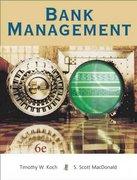Question
56) Define and discuss the two definitions of organization discussed in your textbook. Why are both useful to management, and under which circumstances is each
56) Define and discuss the two definitions of "organization" discussed in your textbook. Why are both useful to management, and under which circumstances is each the better model for understanding the way the organization works?
57) What is a knowledge management system? Provide three examples.
58) Information systems affect organizations economically and behaviorally. Describe the ways in which each of these applies to an understanding of the working of the organization.
59) Discuss the interaction between management and the development of information systems within the company. What do you think is the single most important thing management must do to ensure the successful coordination of these systems with the organization?
60) How does the database approach to data management increase the efficiency and effectiveness of an organization?
61) What are complementary assets? Why are complementary asset investments important to a firm?
62) Define primary and secondary storage, how they differ, and the uses to which each is put.
63) What is a fourth-generation language? List the seven categories of fourth-generation languages with an example of each one.
64) Discuss the issue of centralized versus decentralized computer resources.
65) To be effective, an information system requires input from disciplines beyond the simply technical. Discuss the influence of at least three of these disciplines on the creation and maintenance of an effective information system.
66) What are software packages? List and describe at least three types of PC software packages, other than word processing and spreadsheets, used in modern business.
67) Discuss at least three ways in which the traditional business firm must change to meet the challenges of the new environment in which business is conducted.
68) Identify and briefly discuss the six candidate principles presented in the textbook.
69) Distinguish between MIS and DSS. Who within the organization is most likely to find each useful, and why?
70) What is meant by the term "optimal hierarchy?" How does this concept apply to the digital firm?
Step by Step Solution
There are 3 Steps involved in it
Step: 1

Get Instant Access to Expert-Tailored Solutions
See step-by-step solutions with expert insights and AI powered tools for academic success
Step: 2

Step: 3

Ace Your Homework with AI
Get the answers you need in no time with our AI-driven, step-by-step assistance
Get Started


